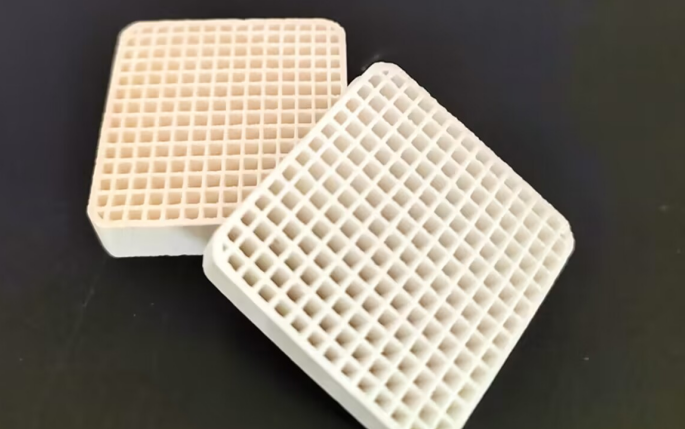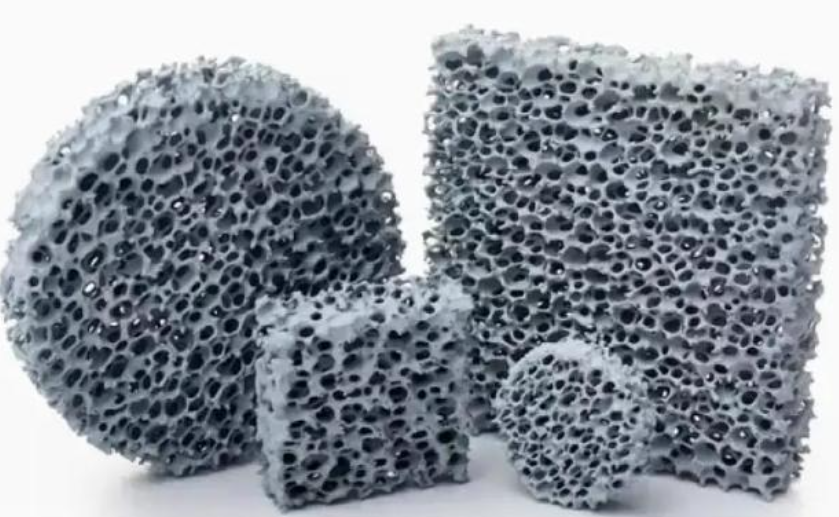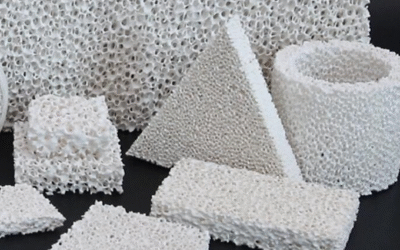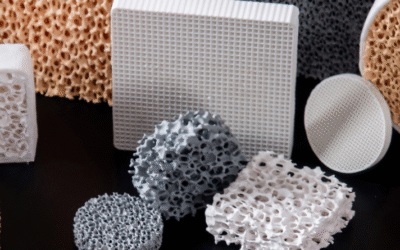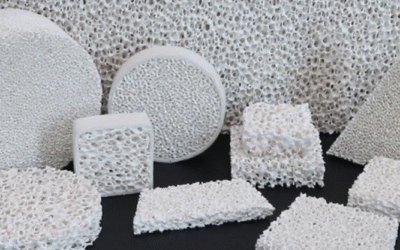Overview of Ceramic Water Filters
Ceramic water filters help improve drinking water quality. I recommend them for areas where clean, treated water isn’t always available. These filters use porous ceramic material. The pores are tiny—between 0.2 and 0.5 microns. This size creates a physical barrier. It removes over 90–99% of bacteria and protozoa from water. Some advanced models remove up to 99.999% of bacteria. They meet or exceed EPA standards for microbiological filtration.
How Ceramic Water Filters Work
- Filtration Process: Water flows through the ceramic’s tiny pores. The pores block pathogens. Clean water passes through.
- No Electricity Required: Most ceramic filters run on gravity alone. Flow rates range from 1–3 liters per hour. This makes them reliable for off-grid use. I suggest them for emergency or rural settings.
Applications and Global Impact
People use ceramic water filters in homes and as portable units. Over 20 developing countries have received these filters. Cambodia and Guatemala are examples. Studies show a big improvement in drinking water quality there. More than 4 million units have been put to use around the world for household water treatment.
Performance and Versatility
Enhanced Removal: You can combine these filters with Activated Carbon or metal coatings. Silver, nano-TiO₂, or nano-ZnO work well. These additions help remove chemicals and viruses too.
Reduces Turbidity: They lower water cloudiness. Taste and temperature stay the same.
Field Results: Models predict up to a 41.3% reduction in childhood diarrhea. This happens where people maintain filters well. I’ve seen data showing that when filter use goes from 0% to 100% in a community, water contamination drops. Mean water contamination falls from 619.5 to 259.5 CFU/100mL. Median contamination drops to just 5.39 CFU/100mL.
Maintenance and Lifespan
- Longevity: Ceramic filters can last 5–10 years with proper care. You need to clean them every few months. This prevents clogging. If you skip cleaning, the filter loses effectiveness.
- Community Health Impact: More people using filters means better water safety. Careful maintenance connects to fewer disease cases. The data proves this.
Design Innovations
Newer filters use antimicrobial coatings. Silver or nano-materials help boost microbial removal. Studies are still checking long-term safety. Researchers want to know about potential leaching.
Cost-Effectiveness and Accessibility
I find ceramic water filters affordable. Household units cost between $20–$50. You don’t need replacement cartridges or ongoing supplies. This makes them accessible for urban and lower-resource areas alike.
Summary of Key Features
- Simple and lasting performance
- Reliable off-grid use
- High removal rates for bacteria and protozoa
- Work well for individual and large-scale use
- Regular maintenance keeps them effective
Pros of Ceramic Water Filters
I recommend ceramic water filters because they offer clear advantages for safe drinking water. Here’s why I think they stand out:
Bacteria and Protozoa Removal
These filters remove 90–99% of harmful germs. This includes E. coli, Salmonella, Cholera, and Cryptosporidium. Their tiny pores measure about 0.5 microns. This creates a strong barrier against dirt and germs. Advanced models meet EPA standards. Some remove up to 99.999% of bacteria with the right setup.
Removes Multiple Contaminants
Add Activated carbon or ion exchange resins to ceramic filters. They will reduce chlorine, fluoride (up to 97%), heavy metals, and VOCs. You can add special cartridges for specific water problems. This expands what the filter can do.
Long Lifespan and Reusable
One filter lasts 5–10 years with good care. Standard cartridges last only 6–24 months. You can wash these filters. Flush them in reverse to restore water flow. This extends their life and cuts replacement costs.
No Power or Skills Needed
These filters use gravity. They work anywhere—no electricity, batteries, or expertise needed. They produce 1–3 liters per hour. Based on my experience, this meets most home needs. They work even in remote or emergency areas.
Affordable and Easy to Get
Ceramic filters cost $10–50 per unit. Maintenance runs under $50 per year. Local makers can produce them cheaper. This supports affordability and local businesses.
Keeps Healthy Minerals and Good Taste
I like that these filters keep minerals like calcium and magnesium. The water tastes natural and fresh. Reverse osmosis removes these minerals.
Good for the Environment
Makers use natural earth materials. Ceramic filters avoid single-use plastics. They reduce the need for chemical treatments.
Easy to Carry
Their light design makes them great for travel. I suggest them for camping, disaster relief, and off-grid living.
Real Results from Real Places
- Cambodia saw childhood diarrhea drop after using ceramic filters.
- Kenyan schools reported better health. They also spent less on water treatment after getting filters.
- Programs in Nicaragua and Guatemala created jobs for local workers. This strengthened local economies. It also built lasting access to clean water.
Key Benefits Summary
- Removes 90–99% of pathogens
- Lasts 5–10 years
- Low maintenance, washable, and reusable
- No electricity or special skills needed
- Costs $10–50 per unit, under $50 per year to maintain
- Keeps healthy minerals in water
- Good for the environment and creates little waste
- Proven to improve public health worldwide
- Light and ready for emergencies
Quick Facts:
– Pore size: ~0.5 microns
– Pathogen removal: up to 99%
– Price: $10–50/unit
– Annual maintenance: <$50
– Lifespan: 5–10 years
– Flow rate: 1–3 liters/hour
Cons of Ceramic Water Filters
Ceramic water filters offer many benefits. But they also have clear drawbacks. I suggest you consider these before choosing one for your drinking water.
Slow Filtration Rate
Reduced Water Flow: The ultra-fine pores (around 0.5–1 micron) slow down filtration. Gravity-fed ceramic filters can take several hours to process a full tank. This gets worse as the filter clogs over time.
Time Commitment: For example, an 8.5-liter gravity system might need 2–5 hours to filter a single tank. This depends on water turbidity and the filter’s condition.
Fragility and Clogging
Prone to Damage: Ceramic filters are brittle. Dropping them can cause cracks or breaks. You need to handle them with care during cleaning and installation.
Frequent Maintenance: Fine pores clog fast with sediment or debris. This happens more in turbid water. You need to clean the filter every 1–2 weeks. In areas with lots of sediment, you may need to clean more often.
Lifespan May Vary: Manufacturers claim a 6–24 month life for ceramic candles. But heavy clogging, aggressive cleaning, or poor maintenance can cut this short. The best lifespan happens with ideal water and excellent care.
Limited Chemical Removal
Cannot Remove Most Chemicals Alone: Standard ceramic elements do not filter out dissolved chemicals well. They miss heavy metals like chlorine, copper, and lead.
Need for Additional Media: Many ceramic cartridges include an inner core of activated carbon or KDF. This removes some chemicals but needs replacement every 3–6 months. That’s much more often than the ceramic shell.
Risk of Bacterial Growth and Biofilms
Potential for Contamination: Stored filtered water and moist filter surfaces can grow bacteria. This includes Pseudomonas and E. coli if you don’t clean the system often.
Health Risk: Without proper cleaning and sanitizing, tank-based gravity systems may harbor bacteria above safe drinking standards. This contaminates the water after it passes through the filter.
Incomplete Protection Against Viruses
Virus Filtration Limitation: Ceramic’s pore size blocks bacteria and protozoa but allows most viruses to pass. You need extra treatment (like UV light or chemical disinfection) in areas where viral contamination is a concern.
Bulkiness and Cost Considerations
Space Requirement: Systems like Berkey are bulky. They take up more space than pitcher or faucet filters. This makes them less portable and harder to fit in small kitchens.
High Upfront Cost: Expect to pay €100–€400+ for a gravity ceramic system. That’s much more than basic countertop jugs, which cost €20–€40. Long-term running costs may be lower with careful upkeep. But the initial investment is high.
Additional Limitations
- Water Hardness: Ceramic filters do not remove minerals that cause hardness (like calcium and magnesium).
- Overestimated Longevity: Published filter lifespans are based on perfect conditions. In practice, performance drops with improper use, missed cleanings, or heavy sediment. This sometimes leads to unsafe water.
- Requirement for Pre-Filtration: In sediment-rich areas, you need a pre-filter to prevent too much clogging. This adds cost and complexity.
- User-Dependent Effectiveness: Based on my experience, effectiveness and service life depend on regular cleaning and correct use. Infrequent or improper maintenance increases contamination risk. It also reduces filter performance.
Data and Real-World Examples
A typical ceramic shell may be rated for 12 months or over 10,000 liters. But inner carbon cartridges often require changing after 3–6 months.
Failure to maintain systems can result in higher-than-safe bacterial counts in the storage tank. This happens even after water has passed through the filter.
Initial costs for full gravity setups are €100–€400+. But proper maintenance can reduce ongoing expenses in the long term.
Summary Table: Ceramic Water Filter Pros and Cons
| Advantages | Disadvantages |
|---|---|
| High removal efficiency: Removes 90–99% of bacteria and protozoa (E. coli, cholera, Salmonella, Cryptosporidium). Meets and beats EPA standards for microbe filtration. | Slow filtration rate: Gravity systems process 1–3 liters per hour. An 8.5L tank can take 2–5 hours to filter. |
| Retains healthy minerals: Leaves calcium and magnesium in your water. This keeps the natural taste and health benefits. | Limited chemical removal: Basic ceramic does not filter most chemicals, chlorine, heavy metals, or viruses. You need to pair it with other media. |
| Affordable price: Initial cost is $20–$50 per filter. Annual maintenance runs under $50. | Frequent cleaning needed: Filters clog fast with dirty water. I recommend cleaning every 1–2 weeks for best flow. |
| Long usable lifespan: Well-maintained ceramic elements last 6 months–2 years. Some can even reach 5–10 years. | Fragile construction: Ceramic is brittle. It can crack or break if you drop it or handle it rough. |
| Reusable and washable: You can scrub or reverse it to restore flow. This extends lifespan and cuts waste. | No protection from viruses: Viruses pass through filter pores. You need UV, chemicals, or boiling for virus safety. |
| No electricity required: Works by gravity. Perfect for off-grid living, power outages, camping, and emergencies. | Quality control varies: Cheap filters may have poor build quality or weak filtration. |
| Low waste and eco-friendly: Uses natural materials and few disposables. Cuts environmental impact. | Hygiene critical: Touching the filter surface can add germs. You must clean and use it with care. |
| Portable and lightweight: Easy to carry for travel, disaster relief, or fieldwork. |
More Details and Real Examples
- Case: In Cambodia, childhood diarrhea rates dropped after people started using ceramic filters. Kenya and Guatemala saw similar wins.
- Cost data: Ceramic cartridges cost less than $30. Most annual maintenance stays below $50.
- Flow rates: Gravity-fed ceramic pot filters deliver 1–3 liters of clean water per hour.
- Service life: With careful cleaning, ceramic units last 6 months–2 years. With great care and clear water, you can push them to 5–10 years.
- Contaminants removed: Bacteria, protozoa, sediment, and cloudiness. Keeps healthy minerals for good taste.
- Not removed without help: Chlorine, most viruses, lead, heavy metals. You need inner carbon, KDF, or ion-exchange media for chemical and metal removal.
- Recommended maintenance: I suggest cleaning the ceramic with a soft brush under running water. Don’t use detergents. Replace the filter if it cracks, pores look damaged, or water flow won’t come back.
- Pre-filtration tip: Based on my experience with sediment-rich or well water, use a sediment pre-filter. This boosts ceramic filter lifespan and performance.
Where I Recommend Using Ceramic Water Filters
Ceramic water filters work well in many situations. I’ve seen their unique structure and strong filtration perform across different needs.
Home Use and Safe Drinking Water
I suggest installing ceramic filters in your home. You can choose countertop, under-sink, or pitcher-style systems. The 0.5-micron pore size blocks bacteria and protozoa. This makes tap or well water safer for drinking and cooking.
Ceramic cartridges last 6 months to 2 years. The lifespan depends on water quality and how often you clean them. They cost less to maintain. Cartridges run less than $30. Maintenance each year stays below $50.
Emergency and Disaster Relief
Ceramic filters provide safe water during emergencies or natural disasters. They work without electricity. They’re light and easy to carry. You can transport them to crisis zones. You can set them up fast if infrastructure fails.
Aid agencies use these filters during floods, earthquakes, or disease outbreaks. Clean water access often disappears in these situations.
Outdoor, Camping, and Travel Use
I recommend compact ceramic filter units for hikers, campers, and travelers. They give you clean water in the wilderness. You can use these filters with gravity-fed bags, backpacks, or manual pump systems. They’re ready for remote locations. Many outdoor ceramic filters weigh less than 1 kg. You can clean and reuse them on the go.
Help for Developing Regions and Rural Areas
I’ve seen ceramic filters distributed in water-scarce or polluted areas in developing countries. They run without electricity and need little maintenance. This works well in places without reliable power or advanced plumbing. Projects in Cambodia, Guatemala, Nicaragua, and Kenya show clear health improvements. Communities benefit from these ceramic filters. CDC studies report a drop in waterborne illnesses. Childhood diarrhea cases fall after programs deploy these filters.
Industrial, Commercial, and Special Uses
Larger ceramic systems work in labs, food-processing, and commercial kitchens. These places need higher water purity. These setups filter large volumes. They use mechanical filtration and adsorption. Models with added carbon reduce chemicals.
Use in Different Climates and Cultures
In hot climates, I like ceramic dispensers made from terracotta or pottery. They filter water and keep it cool. This dual function makes such filters popular. Regions care about both water quality and cooling.
Performance Data and Key Numbers
- Removal rate: Over 99.99% of bacteria and protozoa with 0.5-micron pore channels.
- Better performance: Filters with carbon reduce chlorine, certain pharmaceuticals, pesticides, and heavy metals.
- Installation options: Common setups include benchtop gravity systems, under-sink filters, pitcher filters, and pottery dispensers for temperature control.
Based on my experience, ceramic water filters work best where you need simplicity, reliability, and affordability. I recommend them for home use and rural communities. They also serve well in field hospitals, camping trips, and disaster response efforts. Their proven results, low cost, and flexibility make them a trusted solution for clean water around the globe.

